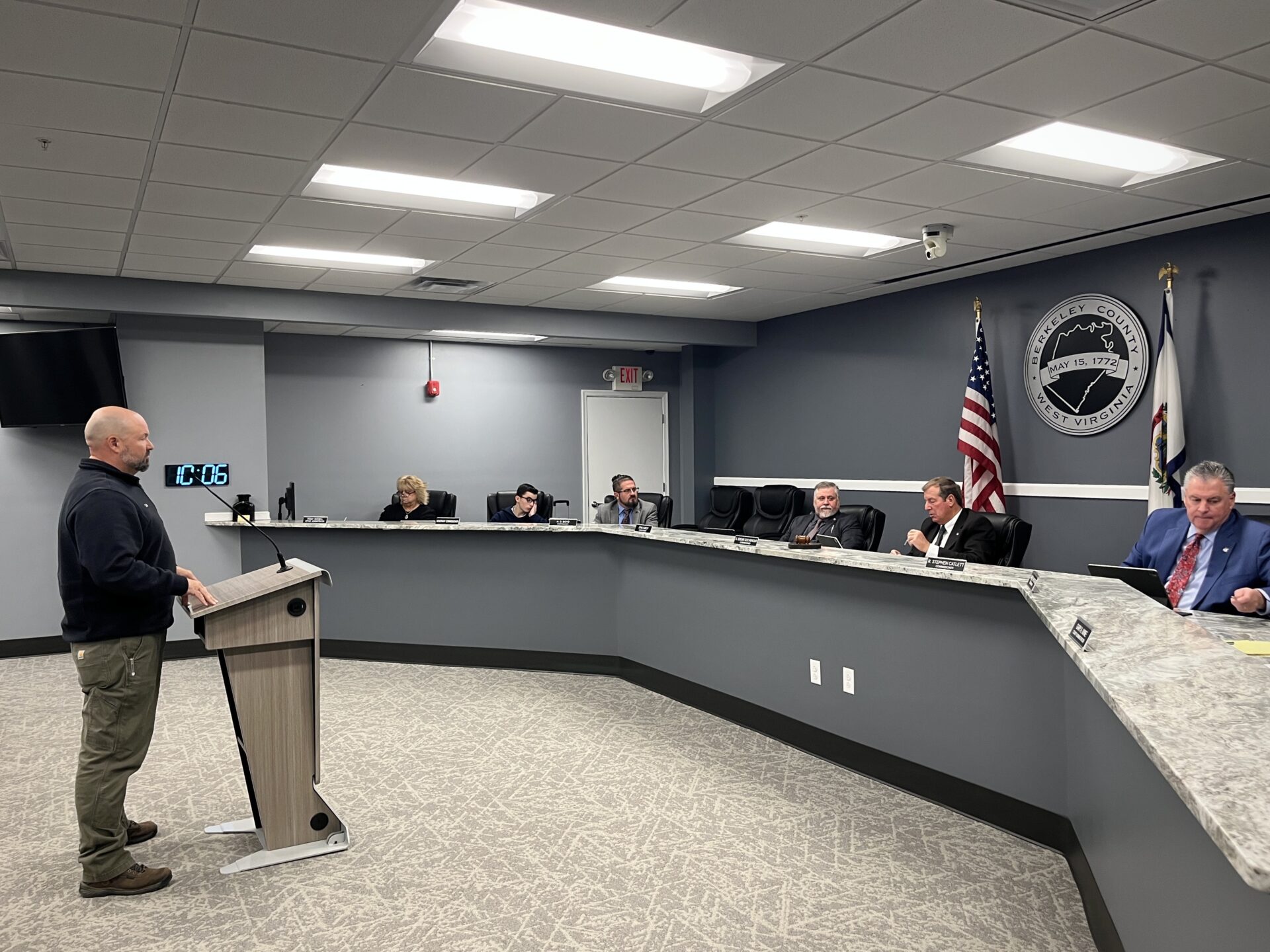Jefferson County officials were left scrambling this month after a local rehabilitation program for low-level criminal offenders with substance use issues announced it would cease operations. But a new decision from a neighboring county may provide participants a lifeline.
The Berkeley County Commission voted Thursday to accept the transfer of Jefferson Day Report Center enrollees to the publicly operated Berkeley County Day Report Center in Martinsburg.
Unlike its peer in Martinsburg, the Kearneysville-based Jefferson County center is a nonprofit organization. While it partners with the county government and magistrate court to provide services, the center operates independently. This month, its board of directors resolved to close in June.
County officials say the sudden decision comes as a shock, and brings risks to participants who depend on the program as a way past addiction and the criminal justice system.
“It wasn’t a little bit unexpected,” Jefferson County Prosecuting Attorney Matt Harvey told West Virginia Public Broadcasting Wednesday. “It was 1000% unexpected.”
Photo Credit: Jack Walker/West Virginia Public Broadcasting
An important service interrupted
Day report centers operate across the United States. Under the West Virginia Community Corrections Act, county magistrate courts can assign people convicted of certain offenses to day report centers. This diverts them away from the prison system, which can be costly to run and comes with a high rate of recidivism — or repeated convictions down the road.
The centers in Berkeley and Jefferson counties are nonresidential, offering participants rehabilitation services and transitional support as a form of supervised release that does not uproot their daily lives.
The Jefferson Day Report Center currently supports roughly 190 active participants, and completed services for nearly 400 people between July 2022 and June 2023, the Spirit of Jefferson previously reported.
Given how many “vulnerable” people depend on the program, Harvey found its plans to close troubling.
The decision “could have impacted everyone that’s coming through the court system,” he said.
Harvey said the board of directors for the Jefferson Day Report Center told him over email that the planned closure boils down to funding issues, because difficulties securing grant funds has made it harder to extend services to the public.
Harvey said he found that reasoning “hypocritical” because the center receives significant state and county funding.
According to its most recent publicly accessible tax reports, the center received nearly $1.1 million in “government grants” in 2023, which comprised roughly 64% of the center’s total revenue that year. That figure also outpaced the center’s reported grant funding in 2022, 2021 and 2020 by hundreds of thousands of dollars.
Meanwhile, the president, vice president, secretary and treasurer of the Jefferson Day Report Center’s current board of directors filed to create a separate Kearneysville nonprofit named “Generations Haven” with the West Virginia secretary of state’s office in April 2024.
The Jefferson Day Report Center did not respond to multiple phone call and email requests for comment on this story regarding the reasoning behind its closure.
Lending a hand
Harvey discussed the facility’s imminent closure with members of the Jefferson County Commission last week. At their March 20 meeting, the commission voted to adopt a plan to transfer active and future participants to the day report center in Berkeley County.
On Thursday, the Berkeley County Commission adopted a memorandum of understanding that okays the plan for one year.
“It’s not going to affect the Berkeley County taxpayers,” said Commissioner John Hardy, who represents the Tuscarora District immediately bordering Jefferson County. “I believe it’s very important for us to be able to work with our surrounding counties … [and] to protect these people that have been going through this program.”
While helping more people access services will take “extra work” from staff, Jefferson County will fund participation and transportation costs for its enrollees without cost to the Berkeley County government, said Tim Czaja, director of community corrections for Berkeley County.
Czaja, who oversees local correctional services like the day report program, feels confident staff members will be able to sustain the additional demand. Previously, residents of Berkeley and Jefferson counties shared a joint day report center that was initially located in Martinsburg, then moved to Jefferson County.
“We’re prepared to take it on, and there’s state grant funds that are available from Justice and Community Services,” Czaja told WVPB after the meeting Thursday. “We can see about having those funds allocated to us next year to help directly meet the need for Jefferson County residents.”
Photo Credit: Jack Walker/West Virginia Public Broadcasting
Keeping participants afloat
While the Jefferson County facility may be closing, Czaja said county demand for rehabilitation and transitional services remains.
“The day report center’s closing doesn’t mean the problem is gone. Those folks are going to need some assistance,” Czaja said. “They asked us if we could help, and we’re happy to do that. We’ve put a plan in place.”
Meanwhile, Harvey said members of the county commission are considering opening and financing a new, public day report center within county lines.
Harvey said he is grateful that participants will not be left without options, but still worries the facility transfer could come with risks. The move will require people in sensitive situations to familiarize themselves with the new facility, and travel a greater distance to access support.
“It creates logistical challenges,” Harvey said. “Just generally, you want to limit friction as much as possible when you’re serving a population that’s vulnerable and marginalized. Transportation is oftentimes the number-one obstacle to recovery.”
The Berkeley County Day Report Center is a roughly 11-mile drive from the Jefferson County facility, and located even further away from Jefferson County’s easternmost towns, which the day report center also services.
“We do have a plan. We have vehicles ready to go to be able to transport people. But, in an ideal situation, you want to treat people where they’re at, either emotionally, mentally or physically,” Harvey continued. “And Jefferson County would be the place.”
